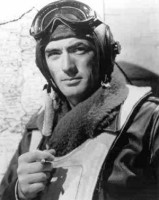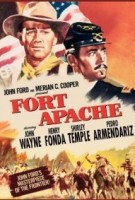Play It Again, Please: The Flyboys & the Calvery
Two movies, both from the 1940’s are worth watching again. They are each about a war, each a century apart. Pop the corn and enjoy Hollywood classics: The Flyboys and the Calvary.
TWELVE O’CLOCK HIGH
In spite of some obvious flaws, I love this movie!
Directed by Richard Zanuck with Gregory Peck and Dean Jagger, it won two Academy Awards in 1950. Jagger won the Best Supporting Actor Award.
It is the story of General Frank Savage and his leadership of a bomber group based in England. It’s unusual in a couple of aspects: first, it is shot in black and white and utilizes actual war footage from the USAF, RAF, and Luffwaffe. Secondly, there are no female main characters – it is a story of young men and their senior leaders exclusively.
The movie’s 918th Bomb Group in Auxbuy, England was actually based on the real 310th in Thurleight. While the British believed that night raids were most effective, the Americans dared daylight, low altitude, strategic bombings.
The plot revolves around the leadership of the bomb group and why this “bad luck” group suffers more losses than other groups. This was actually a real issue in 1942, and the predictions of 30% causalities threatened to end the effort. However, a study by the 8th Air Force in 1943 revealed that most losses occurred when the planes pulled out of formation and that the aircraft had no frontal gun protection.
In the movie, these are also General Savage’s conclusions. In 1944, the traditional wedge formation of 12 B17s flying closed together was changed to 36 planes flying together in three layers, one over the other. When chin turrets were added, each plane had 13 machine guns, and finally when Mustang fighters were added as escorts, B17’s were able to concentrate effectively on the Luftwaffe and the German factories. The movie features the attack on the Schweinfort ball-bearing factory, one of the most significant raids of the air campaign.
By late, 1944, 75% of German industrial production had been disabled, and 250,000 men had flown on 12,000 B17’s. Almost 50,000 men died in them.
The dialogue is sometimes choppy, and some of the actors chop it up even more. Nonetheless, Peck and Jagger are wonderful. In my latest viewing on Netflix, the film is nicely preserved with great black and white photography. While the movie takes a Hollywood approach to history, still, it engages. Among my favorite scenes are the entire first five or so minutes of the movie and a scene where ground crews abandon playing baseball, mount bicycles and swarm across the tarmac to meet the incoming planes.
Twelve O’ Clock High, the movie and subsequent television series, is based on the book of the same name written by Sy Bartlett and Beirne Lay, Jr., and the character of Gen. Frank Savage is based on several commanders, primarily Col. Frank A. Armstrong. Another source of Savage’s character is Gen. Curtis LeMay. You may remember JFK saying he didn’t want Curtis, one his Joint Chiefs, making any decisions, but if it turned out to be war, he wanted him in the lead bomber. (LeMay had recommended that JFK “fry” Cuba during the Cuban missile crises.) LeMay was also the model for Gen. Jack D. Ripper in the movie, Dr. Strangelove.
The beautiful theme music by Alfred Newman and the period touches, the props, make the film more interesting each decade I view it . Everyone smoked a lot (just a couple of seconds and you could have a couple of puffs), notice those metal ashtrays with the cigarette lips so common in homes and offices of the ’50’s, a desk intercom the size of a microwave, and many more. These are all very authentic as the film was released in 1949 and depicts events in 1942-1945.
Fort Apache
This classic John Ford western was released in 1948, and it was the last one Henry Fonda made before he was blacklisted for his leftist political views. (He would, of course, return in triumph!)
In Fort Apache, his character, the vain and pretentious Colonel Thursday, was based on General Custer.
Enchanting to see a 20-year old Shirley Temple, playing a very silly 15-year old girl, Philadelphia Thursday, all swooning and giggly and very pouty over Lt. O’Rourke, played by her real life husband, John Agar, in his first movie role. (They were divorced a year later.)
Delving into the social structure of a western military outpost has some charm. We have three character actors (Dick Foran, Jack Pennick, Victor McLogen) as clown soldiers, along with Ward Bond and John Wayne, each waltzing beautifully.
Directed by John Ford, the movie was based on a short story, Massacre, written by James Bellah. Director Ford took a more sympathetic view of the Indians, and in the movie, he changed the author’s viewpoint.
Richard Hagean, who won an Academy Award for the western musical score, Stagecoach, also wrote this score, including She Wore a Yellow Ribbon. That song title would become the name for another Ford movie with John Wayne in a more typical role.
Obviously PETA was not active, and I sure hope the fast action with the horses was appropriate.
It’s a classic!





